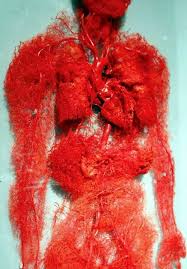Lucky About Renin

Our blood nourishes and oxygenates every cell in our body. But that blood could not reach those cells without a pressure behind it, forcing it through our body. Just as important, if that pressure decreases too much and for too long – minutes in some cases for the brain and heart – death will occur. So, it just so happens, through a series of physiological events far too complicated for our purposes here, the body maintains blood pressure within a relatively narrow range. One of the ways it does this is through a hormone (renin) produced by the kidneys. For the sake of simplicity, when the kidneys sense a decrease in circulating blood volume (a low circulating blood volume translates into low blood pressure), they secrete renin. Renin travels through the blood system to the liver where it is converted to a substance called angiotensin 1. Angiotensin 1 then travels to the lungs where it is converted into angiotensin 2 (A2). Here is where it gets down to the business of increa...




